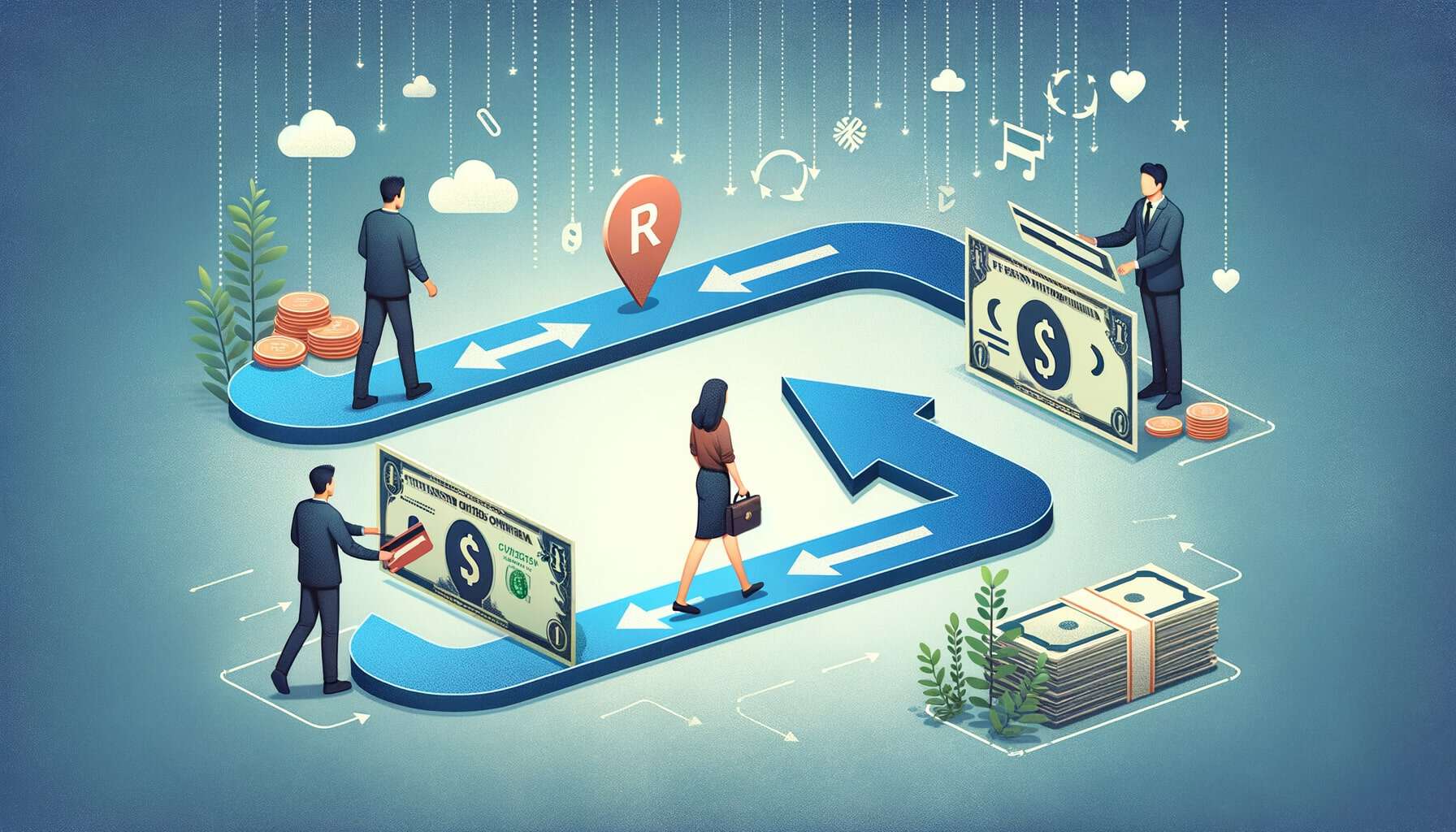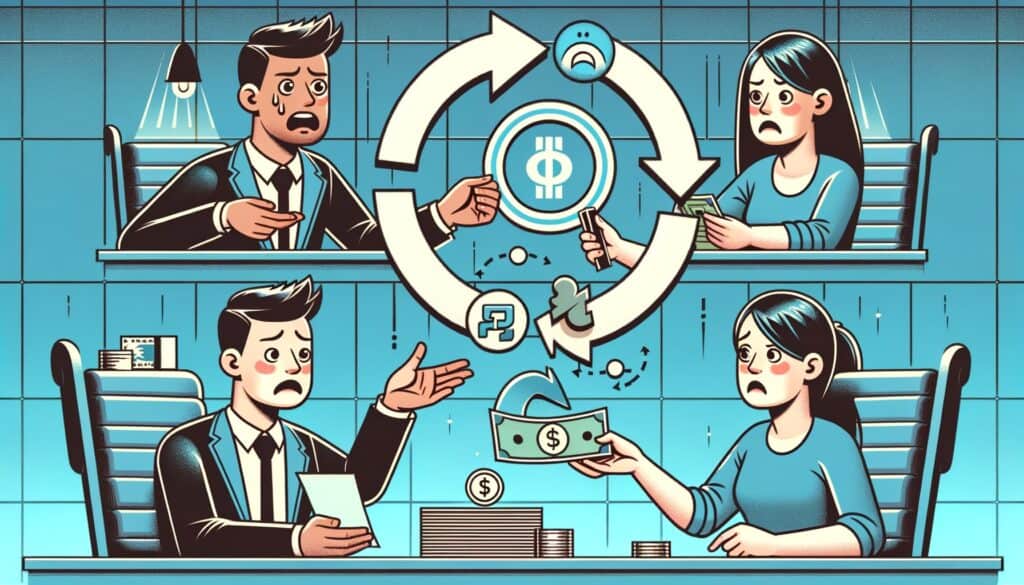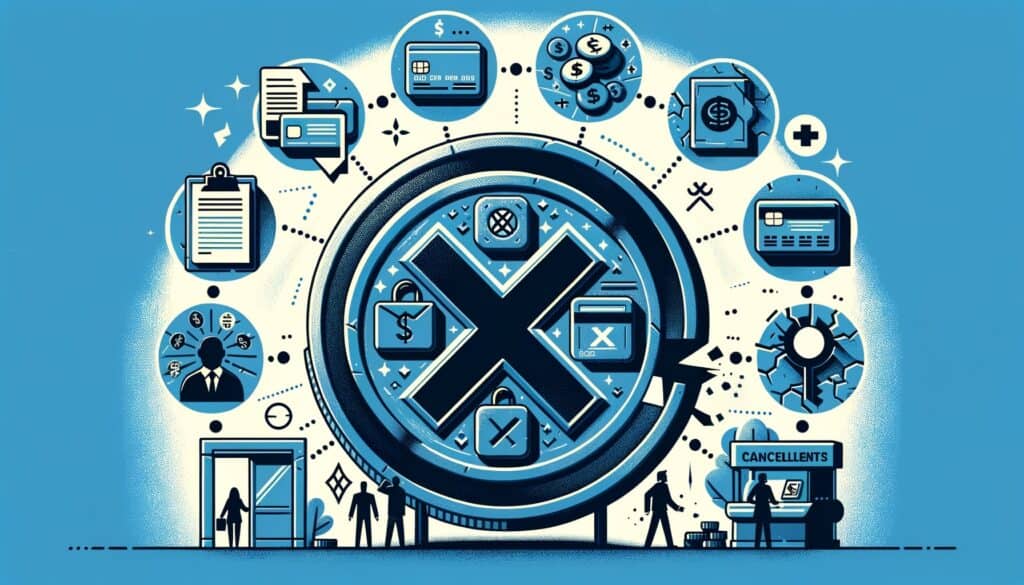
By Harriet Forster January 3, 2025
In today’s digital age, online transactions have become an integral part of our daily lives. Whether it’s purchasing goods or services, paying bills, or transferring funds, we rely heavily on electronic payment systems. However, sometimes these transactions don’t go as planned, and a payment reversal occurs.
In this comprehensive article, we will delve into the concept of payment reversal, how it works, common reasons for its occurrence, the process of initiating a payment reversal, steps to prevent it, and its impact on businesses and consumers.
Understanding the Concept of Payment Reversal
A payment reversal, also known as a chargeback, is a process that allows a customer to dispute a transaction and request a refund from the merchant or financial institution. It essentially reverses the flow of funds, returning the money to the customer’s account. This mechanism acts as a safety net for consumers, protecting them from fraudulent or unauthorized transactions, poor quality products or services, or any other issues that may arise during a transaction.
How Does a Payment Reversal Work?

When a customer initiates a payment reversal, the process typically involves several parties, including the customer, the merchant, the payment processor, and the customer’s bank. Here is a step-by-step breakdown of how it works:
1. Customer Disputes the Transaction: The customer contacts their bank or payment provider to dispute the transaction. They may claim that the transaction was unauthorized, the goods or services were not received, or they were dissatisfied with the purchase.
2. Bank Investigates the Dispute: The customer’s bank initiates an investigation to determine the validity of the dispute. They may request supporting documentation from the customer and the merchant to gather evidence.
3. Merchant Responds to the Dispute: The merchant receives a notification about the dispute and has a limited time to respond. They must provide evidence, such as proof of delivery or customer communication, to support their case.
4. Bank Makes a Decision: Based on the evidence provided by both parties, the customer’s bank makes a decision regarding the dispute. If the bank finds in favor of the customer, a chargeback is initiated.
5. Funds Reversed: The payment processor deducts the disputed amount from the merchant’s account and returns it to the customer’s account. The merchant may also incur additional chargeback fees.
Common Reasons for Payment Reversals

Payment reversals can occur for various reasons, and understanding these reasons is crucial for both merchants and consumers. Here are some common reasons for chargebacks:
1. Unauthorized Transactions: Customers may dispute a transaction if they believe their payment information was used without their consent. This could be due to stolen credit card details or identity theft.
2. Non-Delivery of Goods or Services: If a customer does not receive the goods or services they paid for, they have the right to initiate a payment reversal. This could happen if the merchant fails to fulfill their obligations or if there are issues with shipping or delivery.
3. Dissatisfaction with the Purchase: Customers may dispute a transaction if they are dissatisfied with the quality of the goods or services received. This could include receiving damaged or defective products, poor customer service, or misleading advertising.
4. Fraudulent Transactions: Payment reversals can also occur in cases of fraudulent activity, where a customer intentionally makes a purchase with the intention of reversing the payment after receiving the goods or services.
The Process of Initiating a Payment Reversal

Initiating a chargeback involves specific steps that both customers and merchants need to follow. Here is a detailed guide on how to initiate a payment reversal:
For Customers:
1. Contact the Bank or Payment Provider: If you believe a transaction is unauthorized or fraudulent, contact your bank or payment provider immediately. Provide them with all the necessary details, including the transaction date, amount, and any supporting evidence.
2. Provide Supporting Documentation: To strengthen your case, gather any relevant documentation, such as emails, receipts, or screenshots of conversations with the merchant. This evidence will help your bank in their investigation.
3. Cooperate with the Bank: Throughout the investigation process, cooperate fully with your bank or payment provider. Respond promptly to any requests for additional information or documentation.
For Merchants:
1. Receive the Dispute Notification: When a customer initiates a payment reversal, the merchant receives a notification from their payment processor or bank. It is crucial to act promptly upon receiving this notification.
2. Gather Evidence: Collect all relevant evidence to support your case. This may include proof of delivery, customer communication, or any other documentation that proves the validity of the transaction.
3. Respond to the Dispute: Within the given timeframe, respond to the dispute with all the necessary evidence. Clearly explain your side of the story and provide any supporting documentation.
Steps to Prevent Payment Reversals

While payment reversals are a necessary mechanism to protect consumers, they can have a significant impact on businesses. To minimize the occurrence of payment reversals, merchants can take certain steps to ensure a smooth transaction process. Here are some preventive measures that businesses can implement:
1. Clear and Transparent Policies: Clearly communicate your refund and return policies to customers. Make sure they are easily accessible on your website or at the point of sale. This will help manage customer expectations and reduce the likelihood of disputes.
2. Accurate Product Descriptions: Provide accurate and detailed descriptions of your products or services. Include information about dimensions, specifications, and any limitations or restrictions. This will help customers make informed decisions and reduce the chances of dissatisfaction.
3. Prompt Customer Support: Offer responsive and efficient customer support. Address customer queries and concerns promptly to prevent frustration and dissatisfaction. A satisfied customer is less likely to initiate a payment reversal.
4. Secure Payment Processing: Implement robust security measures to protect customer data and prevent fraudulent transactions. Use secure payment gateways and encryption technologies to ensure the safety of sensitive information.
5. Clear Communication: Maintain open lines of communication with customers throughout the transaction process. Provide order confirmations, shipping notifications, and tracking information to keep customers informed and minimize misunderstandings.
Impact of Payment Reversals on Businesses and Consumers
Payment reversals can have significant impacts on both businesses and consumers. Let’s explore how these reversals affect each party:
Impact on Businesses:
1. Financial Loss: Payment reversals result in the loss of revenue for businesses. Not only do they have to refund the disputed amount, but they may also incur additional chargeback fees imposed by payment processors.
2. Damage to Reputation: Frequent chargebacks can damage a business’s reputation and credibility. Customers may perceive the business as unreliable or untrustworthy, leading to a loss of future sales.
3. Administrative Burden: Dealing with chargebacks requires time and resources. Businesses must invest in customer service and dispute resolution processes, diverting their attention from core operations.
Impact on Consumers:
1. Protection against Fraud: Payment reversals provide consumers with a safety net against unauthorized transactions and fraudulent activity. They can dispute transactions and recover their funds, providing peace of mind.
2. Consumer Confidence: The availability of chargebacks increases consumer confidence in online transactions. Knowing that they have recourse in case of issues or disputes encourages consumers to make online purchases.
3. Inconvenience and Delay: While payment reversals protect consumers, they can also be inconvenient and time-consuming. The process of disputing a transaction and waiting for a resolution can cause frustration and delay.
Frequently Asked Questions
Q1. What is the difference between a payment reversal and a refund?
A payment reversal is initiated by the customer and involves disputing a transaction, while a refund is typically initiated by the merchant as a voluntary return of funds to the customer.
Q2. Can a payment reversal be reversed?
In some cases, a payment reversal can be reversed if new evidence is presented or if the initial reversal was made in error. However, this process can be complex and depends on the policies of the bank or payment provider.
Q3. How long does a payment reversal take?
The duration of a payment reversal varies depending on several factors, including the complexity of the dispute, the responsiveness of the parties involved, and the policies of the bank or payment provider. It can take anywhere from a few days to several weeks.
Q4. Can a merchant dispute a payment reversal?
Yes, merchants have the right to dispute a payment reversal by providing evidence to support their case. However, the final ++decision rests with the customer’s bank or payment provider.
Q5. Are there any fees associated with payment reversals?
Yes, merchants may incur chargeback fees imposed by payment processors for each payment reversal. These fees can vary depending on the payment processor and the number of chargebacks.
Conclusion
Payment reversals are an integral part of the modern digital payment landscape. Understanding the concept, process, and impact of payment reversals is crucial for both businesses and consumers. By implementing preventive measures and maintaining clear communication, businesses can minimize the occurrence of payment reversals.
Consumers, on the other hand, can take advantage of payment reversals to protect themselves against unauthorized transactions and fraudulent activity. As the digital payment ecosystem continues to evolve, payment reversals will remain an essential tool in ensuring secure and reliable transactions for all parties involved.